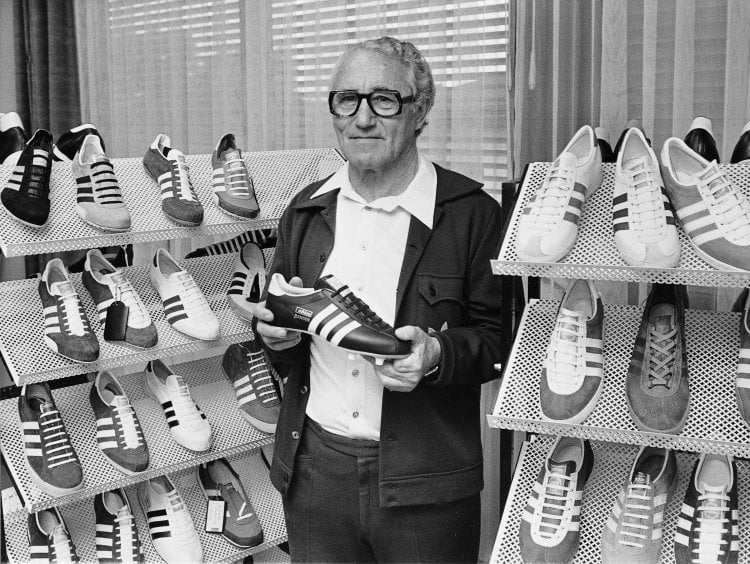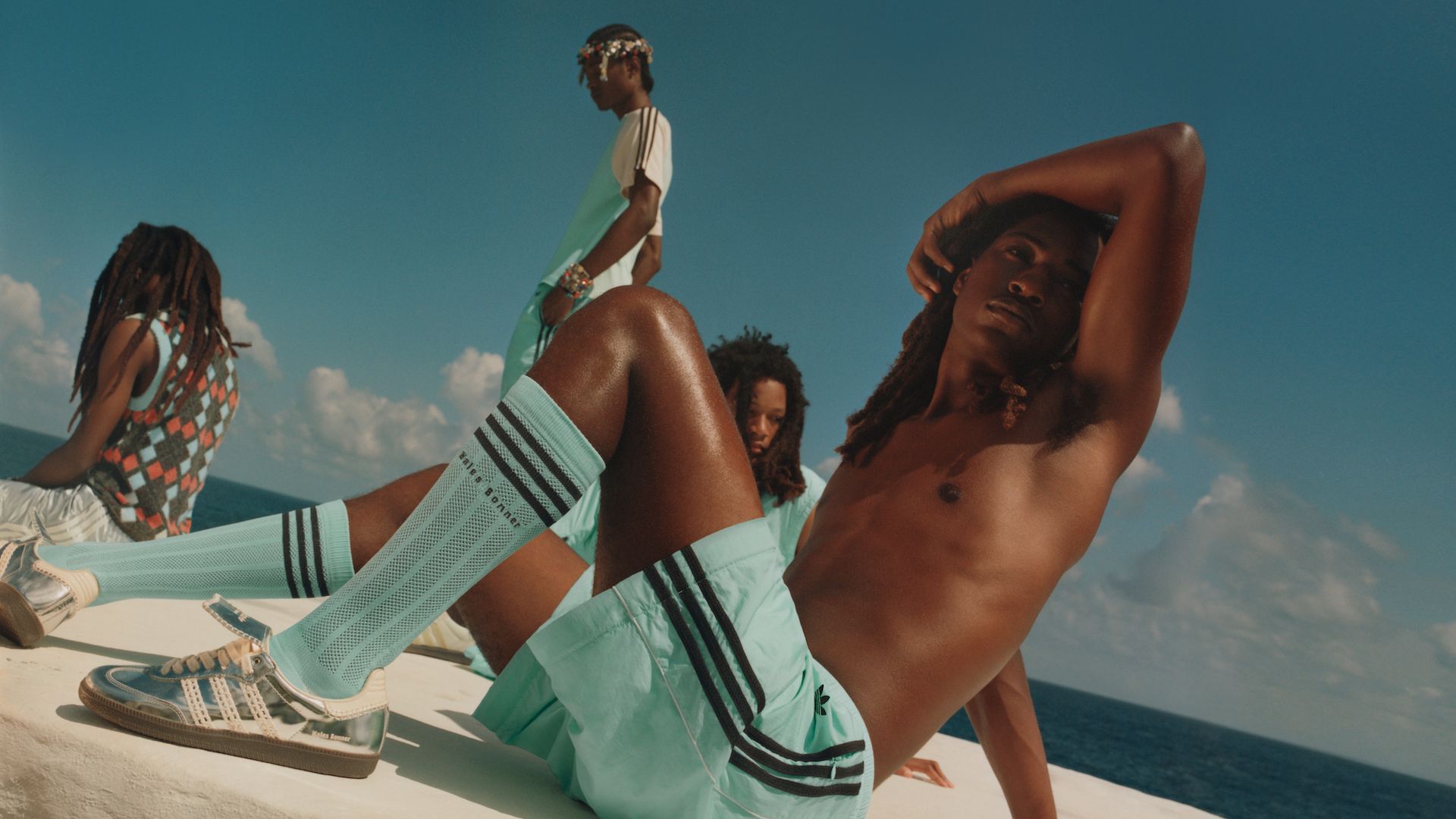COMPANY

DON'T FOLLOW. BE THE FIRST.
Get updates on collections, trends and special releases
Originally designed for football, the Samba was engineered for peak performance and innovation of its era. However, it transcended its initial purpose to become a culturally significant icon, ranking third in popularity only behind the Superstar and Stan Smith models.
Before the birth of the adidas Samba, footballers faced a challenge during winter months when most football pitches in Germany turned icy. Footwear of the time failed to provide proper traction, resulting in players slipping on the field. Adi Dassler‘s innovation introduced a rubber sole that offered excellent grip even on icy grass, addressing this problem effectively. Additionally, the adidas Samba‘s kangaroo leather composition made it ideal for winter sneakers, keeping feet warm and dry.

The crucial moment arrived in 1950 with the FIFA World Cup in Brazil, though it presented a unique challenge. The Samba, designed for harsh European winters, wasn’t suitable for the scorching Brazilian terrain during June and July, the World Cup months. However, Adi recognized this as a golden opportunity. Since footballer sponsorships were nothing like today’s standards, he had to devise an innovative marketing strategy to match the shoe’s innovation.
“The solution was to name the shoe Samba,after the well-known Brazilian folk dance, beloved by all.” Adi Dassler
The brand aligned the shoe with Brazilian culture, leading national team players to wear it during the championship. This strategy worked exceptionally well, and the adidas Samba went down in history as one of the most iconic shoes ever.

The adidas Samba underwent a remarkable transformation, evolving from its original role as an exclusive shoe for icy terrain to embrace a wide range of sports and activities. In the early 1970s, Europe saw the rise of 5-a-side Futsal, played on hard surfaces, where the adidas Samba‘s exceptional grip made it the preferred choice. This parallel growth made the Samba synonymous with futsal’s popularity in Europe, dominating the market for a significant period until competitors like Nike and PUMA entered the scene in the late 1990s.
In parallel, during the 1990s, skateboarders discovered the adidas Samba, quickly making it an essential part of their gear. This enduring connection to skateboard culture eventually inspired adidas to create a skate-specific sneakers inspired by the Samba, known as the Busenitz, in 2006.
In Africa, the Samba maintained immense popularity among amateur footballers and those playing at less competitive levels until recently when cleats and blades became widespread. The adidas Samba excelled on the hard, sandy fields where local football was played. Cleats were avoided due to the potential risk of injury to opponents and the known damage to ankles and knees when used on hard surfaces consistently. This preference for low-profile shoes, like the Samba, prevailed in such conditions.
With seven decades on the market, adidas’ Samba has evolved over time. In the 1970s and 1980s, Samba models embraced a lifestyle vibe, capturing the hearts of a growing generation of young Britons. During this era of Argyle jumpers, polo shirts, and ubiquitous Samba sneakers, “casuals” became a fixture in football stadiums, injecting new life into the already beloved shoe. The “casuals” made an undeniable contribution to turning the adidas Samba into a timeless classic.
Over the past five years, adidas has resurrected classic models from the past such as the Spezial, the Samba and the Gazelles. The latter were the stars of the 2022 collaboration with Gucci.
In a cultural context in which the trainers and steretwear industry has grown into a gigantic bubble ready to burst at any moment, we have witnessed an exaggerated proliferation of silhouettes homologated to the stadards of the moment, countless reinterpretations, sometimes unfortunate, of the same models and collaborations sometimes lacking in inspiration, a latent need has developed to rediscover the cultural and aesthetic component of the footwear world.

The irrational rush for hype and the latest trainer model has been countered by a growing interest in historical heritage, research in the archives and the quality of sneakers that have stood the test of time.
Indeed, over all these years, without any targeted marketing campaigns, without any major innovations or extravagant changes, without the attention given to major launches, the adidas Samba has continued to enjoy consistent success, selling over 35 million pairs throughout Adidas' history, second only to the figures of the Stan Smith. This success was achieved almost effortlessly, maintaining that aura of coolness that is impossible to create artificially.

Today, after the recent rediscovery of their incredible appeal, even the newest generation is ready to wear a symbol of essential normcore aesthetics. A declaration of intent that marks the definitive shift towards a more sober, contemporary, and evolved aesthetic.
Despite the presence of high-profile collaborations with names such as Grace Wales Bonner, Jonah Hill and even Beyoncé, adidas Samba shoes have regained their former relevance without undergoing any significant changes since their inception in 1950.
COMPANY

DON'T FOLLOW. BE THE FIRST.
Get updates on collections, trends and special releases
Copyright @2021 Black Box Store.
all right reserved.
Registered office: Via Romaniello 21/B, Napoli (NA), Italy | N. REA: NA – 823189
Tax Code and VAT number: IT06555971214 | Share capital: Euro 800.000,00 fully paid